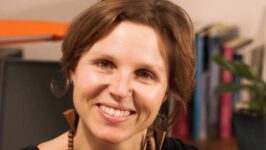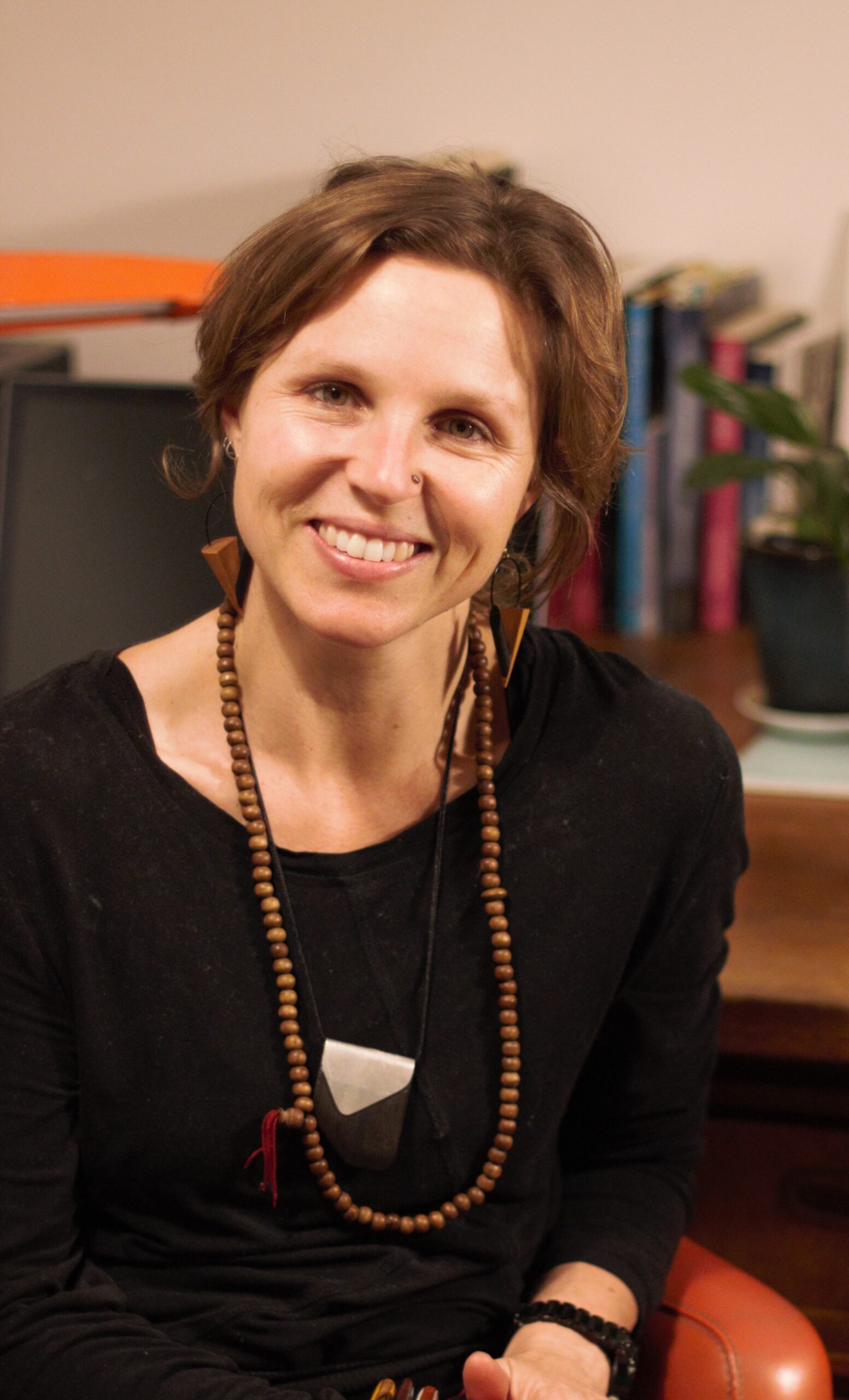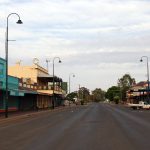Restoring Justice: An Interview With The Cicada Project’s Thea Deakin-Greenwood

The system of laws and rulings that constitute the Australian criminal justice system are designed to protect the community and its property. And while the function it serves is much respected, it can sometimes be maligned for its emphasis on punitive solutions above all else.
An alleged perpetrator of a crime is arrested, charged, put on trial and if found guilty, they’re sentenced to prison time. Whereas the victim of a crime is harmed, and as the survivor, they report it to police, make a statement and then testify in court.
The circumstances of a crime can see the victim and offender come into very close contact, or no contact at all. But, from that point on, the criminal justice process they undergo sees them completely separated – besides that sideways glance across the courtroom.
For some survivors of a crime, the criminal process is all that they need to see justice served. But others can be left traumatised by a very significant and unwarranted event that punitive measures can’t heal or bring about significant closure to.
Accountability and reparation
Restorative justice is a practice that seeks to overcome some of the barriers to seeing justice met that the traditional system doesn’t meet.
Importantly, it empowers the survivor by providing them with a voice and it brings the perpetrator face-to-face with the victim of their offence.
This approach to dealing with crime sees the person who committed the offence enter into a dialogue with the individual targeted by the crime, so that they can come to an understanding of the consequences of the incident, as well as how reparations can be made.
The terminology used in restorative justice differs from that used traditionally in that it refers to the victim-survivor as the person harmed, while the offender becomes the person responsible.
Survivor-orientated
Located in Katoomba, the Elizabeth Evatt Community Legal Centre provides free legal advice throughout the Blue Mountains and the Central Tablelands. And the centre has just launched The Cicada Project.
The Cicada Project is a program that’s providing a restorative justice response to sexual violence, which is survivor-orientated and trauma-informed. The project is instructed by long-term practices overseas, such as New Zealand’s Project Restore and Restore Arizona in the US.
The new initiative has been developed by Churchill fellow and solicitor Thea Deakin-Greenwood, who has a long history of working with survivors of sexual assault and domestic violence, and UNSW criminology senior lecturer Dr Jane Bolitho, who brings her research focus to the project.
Sydney Criminal Lawyers spoke to Ms Deakin-Greenwood about what it means to make the person harmed central to the justice process, the benefits this practice can bring to the person responsible, and why this method can heal wounds in a way that punishment can’t.

Ms Deakin-Greenwood, you’ve just launched the Cicada Project, which is “a survivor-oriented, trauma-informed restorative justice response to sexual violence”. Firstly, how do you explain restorative justice?
We use the working definition the UN provides, which is that it’s a process for the victim and the offender, and anybody else in the community who’s impacted by the harm, to come together to talk about and resolve the matters arising from that harm.
It’s often with the help of an impartial third party.
We see that there are three important parts in the process for resolving the harm. That’s for the survivor or the person harmed to speak to the experience, for there to be a bearing of witness to that narrative, and to also reflect on the future.
In that way, restorative justice is an opportunity for voice and validation for the person who has been harmed and also for accountability for the person responsible.
And it’s future-looking as it creates safety and plans regarding what people may or may not want to happen.
It rises from an understanding that when a crime occurs there’s harm to people, to relationships and to the community. But, unlike the criminal system, restorative justice isn’t looking at punishment, it looks at a way for reparation of the harm.
The approach we take is survivor-oriented and it really centres on the needs, the views and the wishes of the person who’s been harmed.
It’s essentially a way of creating safe spaces for people to talk about what happened to them, and to have an opportunity for meaningful justice, which is really directed by the survivor themselves.
And how is restorative justice currently being applied in NSW?
The Youth Justice Conferencing scheme is the program people are most familiar with. It operates because of the Young Offenders Act (1997).
It’s a diversionary tool to steer young people away from the criminal justice system, with the understanding that incarceration can have many adverse impacts on that young person.
The Youth Justice Conferencing scheme runs throughout NSW and there are similar schemes in all states and territories.
But, in NSW, it doesn’t capture sexual violence – the types of sexual harm that are covered by the Crimes Act. Those matters are not eligible.
For adults, there’s the Victims Support Unit, which sits within Corrective Services in the Justice Department.
They conference matters where somebody who’s been through the criminal process and the survivor consent to a conversation, which is facilitated by restorative practitioners.
The program deals with about ten to twelve matters a year. And most of them are around negligent driving causing homicide-type offences. That unit has also dealt with sexual offences at times.
It’s one thing to say you’re going to apply restorative justice to deal with, say, a teenager stealing another’s bike, but when it comes to introducing it to deal with sexual violence, people tend to hesitate.
How can restorative justice help when it comes to sexual violence?
The principles that we base our work on are about asking the person who has been harmed, what it is they need and what it is they want.
When we ask those questions often people want a voice, they want their experience to be validated, they want to participate, they want accountability and sometimes they want vindication and punishment.
When we talk about what their justice needs are, punishment is not usually one of the top things people want. Often, they want to be seen and heard. They want to have their needs met. And they also want what happened to them not to happen to other people.
It’s a framework, which can be applied to any type of harm.
When we’re talking about sexual violence, the starting point in the current system is limited and doesn’t necessarily allow access to people experiencing sexual violence.
When we talk about people who commit sexual violence – especially those who commit sexual violence towards children – it’s an uncomfortable truth that the majority of those people are in our communities, not gaol.
Restorative justice is able to ensure that there’s community safety by engaging those people in a process that’s meaningful.
In order to access the criminal system, there are many different barriers that people have to get over.
The first is being able to report a crime to the police in enough detail that they’re able to take that information forward and have it result in a charge, a prosecution and a hearing.
Many of my clients say that the system is not accessible to them to start off with, and they want to have something that’s better designed to meet their needs.
We also have a strong principle when we do our work that it’s not mandated or prescriptive. It’s a consent-based model, so both parties have to consent to participate.
We do this work with caution and adherence to the practice guidelines. And it can absolutely meet the needs of people who have been harmed by serious offences, as well as do a lot for people who are responsible for them.
The Cicada Project is survivor-orientated. It has an emphasis on upholding a survivor’s right to meaningful justice.
How is the survivor central to the way the Cicada Project operates? And why would you say the current criminal justice system doesn’t provide survivors with meaningful justice?
There’s a huge barrier at the starting point. For instance, some sexual violence towards children is actually committed by other children. Not all of those matters are brought before the youth system.
But, in matters where they are, for the person who’s responsible, there’s usually a history and a context for their own offending, which matters. Their needs are not necessarily being met by a period of incarceration.
Another thing is that for some survivors of sexual violence, the crime happened a long time ago. So, in order for police to carry out an investigation in the first place, there are many hurdles that they have to get over in order to bring a charge against somebody, adult or child.
Making a report to the police is really distressing and can be quite a difficult thing to do. It’s not where most people want to make a disclosure about sexual assault.
It’s also the fact that some people who experience sexual assault have continuing relationships with the person who harmed them, because they’re in their family. So, they don’t necessarily want the punitive system that criminal justice offers.
For us, we come back to asking the survivors what they want. Some people want that system and we support it being there. But, we would also say it’s not the only answer to solve complex problems like sexual violence.
Those problems are often best dealt with within the community with services that can support the safety needs of everybody.
When it comes to applying this sort of method to the perpetrator, people might see it as a soft option. What experience does a perpetrator have with restorative justice? And what sort of outcomes can it lead to?
The South Australian Juvenile Justice model has been evaluated by Kathy Daly. It’s a good example of the expectations that survivors have from the process, and also, the continuing engagement of people who are responsible with other services.
There are opportunities for the person who’s responsible to be accountable. They’re confronted with the consequences of their actions, much more than they are in a courtroom.
At the conference, where they’re brought together with the person who they’ve harmed, they have to be accountable, they have to listen and bear witness to the harm that they’ve caused.
Then they have an opportunity to be more connected with their community and the people who might be able to keep them safe in the future and be directed into treatment and supported to engage in those programs.
It’s not a soft option. It’s actually a really difficult and slow process to go through, to get to the point where you are in the victim-offender dialogue.
Part of that hard work, which is done by specialised clinicians, is working with both parties to really understand what their needs are and to properly support them to engage in the services.
If that wasn’t in place, then there would be a lot of risks for both parties in bringing them together in a conference. The work is slow and hard.
During my Churchill scholarship, I spoke with somebody who’d been through a restorative process after being convicted of child sexual assault.
He very plainly said that he would happily do the time, rather than have to come face-to-face again with the person who he’d harmed and be accountable to them, their family, his family and his community. That was the hardest thing he had done. To show up to that process.
There are many different types of people who commit sexual offences, and we need to have many different options in how to support them, as well as my client group, who are survivors.
Restorative justice isn’t something that we’re advocating for alone. We’re advocating for a range of things.
We support the evidence-based process of community treatment that Dr Kelly Richards recommends through her report to ANROWS, which is the provision of Circles of Support and Accountability (CoSA).
These are the best support structures for people convicted of child sexual offences, and sex offending. CoSA are not done in NSW. But, we’re advocating for the use of CoSA.
We’re advocating for NSW Health to make forensic services better available in the community, because that’s a really important part in the range of responses that we need for sexual harm.
The Cicada Project has been strongly guided by New Zealand’s Project Restore, which has been in operation since 2005. What sort of results have they had over there?
Their program is effective in conjunction with other things. Those are community supports, treatment services and the circles, which we know is what improves people’s connections with their communities.
In New Zealand, they have a number of community-based programs that specifically work with people who are responsible for sexual harm. We don’t have them in NSW.
We don’t have accessible public health networks for people who are responsible for sexual harm and are genuinely help-seeking.
The parts of restorative work which connect people back to their communities, support them to engage in those types of processes and those types of ongoing treatment is what the benefit of restorative justice is.
Some of the evaluations of Project Restore show that people are more likely to take up, engage and stay connected to treatment if they participate in restorative justice. They’re better able to see the impact of their behaviour. And they’re better able to be accountable.
This differs to the criminal process where people don’t necessarily need to participate in the court process, don’t necessarily hear from the survivor, answer their questions, or be directed into treatment.
Those really hard questions that the survivor might have for them are able to be managed much better in a restorative process.
Some of the evidence from New Zealand is that people are more willing and able to engage in treatment.
If that’s an outcome that we can achieve here, and advocate for those services to be available in the community, that would be a really important safety outcome for a restorative process and one that would meet the needs of people who have been harmed.
Back to restorative justice as a whole. What would you say the end point of this practice is?
It’s about taking the solutions to complex problems and harms in the community and putting the answers to those questions and the solutions that we need back into the hands of the community where those problems have come from.
So, using those things that we’ve seen overseas, it’s about strengthening community networks and relationships to ensure that when harm occurs – if it does occur again – there’s a response, and the person is connected to their family and to the community, who can also take some control and ownership of what has happened.
Restorative justice is about that. It’s about building relationships and reforming connections to the community. We know that those things are really important in terms of reducing risk and reducing people’s isolation and giving them the support structures they need.
And lastly, the Cicada Project has just launched. How is the program being organised? And what sort of response have you had from the community so far?
We’re guided by a consultant group of local organisations, as well as international partners. So, we take advice from the local agencies and peak bodies that have agreed to participate in our work.
We’re also formalising an agreement with Restore Arizona in the United States. And we’ll be mirroring and adapting Restore Arizona for application in NSW.
This is something that has a global focus because we take our advice from our research and practice partners and apply and adapt those principles to NSW.
We’ve done this work slowly and carefully to consult with the key stakeholders and community advocacy groups, who we see from a trauma-informed perspective and a gendered-violence perceptive as being key.
From there, we have broadened our consultation to other service providers working at the front line responding to survivors and victims of sexual violence.
The response that we have had has been overwhelmingly supportive. People have concerns. People are unfamiliar with what the evidence says about best practice from overseas, but they’re very interested to know what it is.
We know that there are many problems with the traditional criminal legal system as it is. There’s opportunity to see what else is out there, and what would better serve people affected by sexual violence.
But what we are lacking at this stage is financial support.







